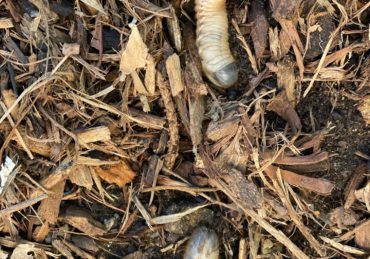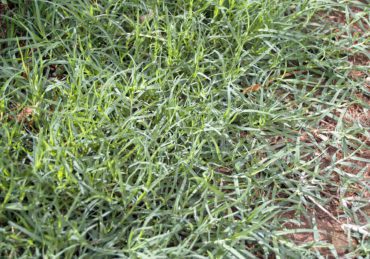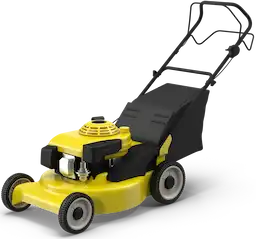When to Aerate Your Lawn
Lawn aeration is a crucial yet often overlooked practice in maintaining a healthy, vibrant lawn. Aeration is the process of perforating the soil with small holes, allowing air, water, and nutrients to penetrate the soil and reach the grass roots. This process fosters strong, more resilient turf. However, timing is crucial when it comes to aeration. Knowing when to aerate your lawn can make all the difference in the effectiveness of the practice. Here we’ll delve into the optimal seasons and conditions for lawn aeration, ensuring you’re equipped with the correct information to provide your lawn with the care it needs.
Why Lawn Aeration is Essential
Lawn aeration offers numerous benefits that in addition with other services, such as dethatching and overseeding, will help your lawn’s overall health. By creating small holes in the soil, aeration improves soil health by reducing compaction and promoting better circulation of air, water, and nutrients. Aeration stimulates root growth, allowing grass to develop a deeper and more extensive root system. This leads to stronger, more resilient turf that can better withstand drought, heat, and other stressors. Giving these substantial benefits, timing your aeration efforts correctly is crucial to maximize these advantages.
Benefits of Lawn Aeration
Aeration provides a host of specific advantages that are proven to significantly improve the overall health and vitality of your lawn. One of the primary benefits is the reduction of soil compaction. Compacted soil restricts root growth and the movement of water, air, and nutrients. By creating small perforations, aeration loosens the soil, alleviating compaction and allowing roots to expand more freely.
Another key advantage is the increased oxygen supply to the roots. Roots need oxygen to thrive, and aeration allows air to flow to the root zone. This increased availability of oxygen boots the root metabolism and overall plant health.
Furthermore, aeration improves the effectiveness of fertilizer applications. With reduced compaction and improved soil structure, fertilizers can reach the root zone more efficiently. This results in better nutrient uptake by the grass, promoting healthy growth.
Signs Your Lawn Needs Aeration
Several common indications that can signal when to aerate your lawn. One of the most noticeable signs is water pooling or runoff, which occurs when the soil is so compacted that it cannot absorb water effectively. This not only leads to puddles but also deprives the grass roots of essential moisture.
Another indicator is thin or patchy grass. When soil compaction prevents air, water, and nutrients from reaching the roots, the grass struggles to grow, resulting in a sparse and weak lawn. Stunted root growth is another indicator caused by soil compaction. Grass roots will grow short and stunted in compacted soil because the roots are unable to penetrate the soil.
Additionally, if your lawn feels hard and dense underfoot, it’s a strong indication that the soil is compacted and in need of aeration. Recognizing these signs early can help you take timely action to aerate your lawn.
How Aeration Works
Aeration is a relatively straightforward process that involves creating small holes in the lawn to alleviate soil compaction and promote healthier grass growth. The most common tools used for aeration are spike aerators and core aerators. Spike aerators use solid tines to poke holes in the soil, while core aerators remove small plugs of soil and grass.
The mechanics behind aeration of simple but very effective. By perforating the soil, aeration reduces compaction, allowing roots to grow deeper and stronger. This increased root growth enhances the lawn’s ability to absorb water and nutrients, leading to strong more resilient grass. The holes created by aeration also improves oxygen flow to the roots, which is vital for root metabolism and overall plant health. Additionally, by allowing fertilizers and other treatments to penetrate the soil, aeration maximizes their effectiveness, further promoting healthy grass growth.

The Best Seasons for Lawn Aeration
Understanding the optimal times of year for aerating your lawn is crucial for maximizing the benefits of this important lawn care practice. Aerating at the right time ensures that your grass can recover quickly and take full advantage of improved soil conditions, leading to a healthier, more vibrant lawn. Different grass types and regional climates play a significant role in determining the best aeration periods. For cool-season grasses, early spring and early fall are ideal, while warm-season grasses thrive best with aeration in late spring to early summer. This section will guide you through the optimal timing for aeration based on your lawn’s specific needs and regional factors, helping you achieve a lush, resilient landscape.
Spring Aeration: Timing and Benefits
Spring is an excellent time for aeration, especially for cool-season grasses, as it coincides with their peak growth period. Aerating in spring helps alleviate soil compaction and improves water, nutrient, and oxygen absorption just as the grass begins its vigorous growth phase. This timing allows the lawn to quickly recover from the aeration process, filling in the holes with new, healthy growth. Additionally, spring aeration sets the stage for optimal root development, enabling the grass to establish a strong, resilient foundation before the stress of summer heat and drought. By aerating in spring, you ensure your lawn remains lush throughout the year.
Fall Aeration: Timing and Benefits
Fall aeration offers numerous advantages and is often considered the best time for this crucial lawn care practice, particularly for cool-season grasses. During the fall, the cooler temperatures and increased rainfall create ideal conditions for grass to recover and grow after aeration. The grass is actively developing roots and storing energy for the winter, making it an opportune time to reduce soil compaction and enhance nutrient uptake. Aeration in the fall also helps to break down thatch buildup, improving soil health and promoting a stronger, more resilient lawn. By aerating in the fall, you prepare your lawn to endure the winter months and emerge healthier and more vibrant in the spring.
Regional Considerations
The timing of lawn aeration varies significantly across different climates and regions, as local weather patterns and soil conditions play crucial roles in determining the best time to aerate your lawn. In cooler northern regions, such as the Northeast and Midwest, aeration is best performed in early fall or spring, aligning with the active growth periods of cool-season grasses like Kentucky bluegrass and fescue. In these areas, the cooler temperatures and consistent rainfall in fall provide ideal conditions for recovery and growth. Conversely, in warmer southern regions, such as the Southeast and Southwest, late spring to early summer is the optimal time for aeration. This timing coincides with the peak growing season for warm-season grasses like Bermuda and zoysia, allowing them to recover quickly and establish strong roots before the intense summer heat. In arid regions like the Southwest, where soils are often compacted and dry, aeration might be needed more frequently to ensure water penetration and root development. Understanding the specific climate and regional conditions is essential for determining the best aeration schedule, ensuring your lawn receives the care it needs to thrive.
Tips for Effective Lawn Aeration
Preparing your lawn before aeration is a crucial step to ensure the process is as effective as possible. Proper preparation not only makes the aeration process smoother but also maximizes the benefits for your lawn, leading to healthier, more resilient grass. This section will guide you through the essential steps homeowners should take to ready their lawns for aeration, from mowing and watering to marking obstacles and clearing debris. By following these guidelines, you can create optimal conditions for aeration, helping your lawn achieve its full potential.
Preparing Your Lawn for Aeration
To ensure successful lawn aeration, homeowners should follow several practical steps for preparation and follow-up care. Before aerating, mow the lawn to a shorter height than usual and thoroughly water it a day or two in advance to soften the soil, making the aeration process more effective. It’s also beneficial to mark any sprinkler heads or hidden objects to avoid damaging them during aeration. When aerating, use a core aerator for the best results, focusing on heavily trafficked or compacted areas. After aeration, leave the soil plugs on the lawn to decompose naturally, as they provide valuable organic matter back into the soil. Follow up with fertilization and overseeding to fill in any bare spots and promote thick, healthy grass growth. Ensure consistent watering in the weeks following aeration to help the grass recover and establish strong roots. By carefully preparing for aeration and providing proper aftercare, homeowners can ensure the process is effective in enhancing their lawn’s health.
Choosing The Right Aeration Tools
When it comes to aeration tools, homeowners have a variety of options to choose from, each with its own advantages and suitability for different needs. Manual aeration tools, such as hand-held spike aerators and plug aerators, are affordable and ideal for small lawns or spot treatments. These tools require more physical effort and time but can be effective for less extensive aeration tasks.
On the other hand, mechanical aerators, which include both spike and core aerators, are more efficient and suitable for larger lawns. Spike aerators puncture the soil with solid tines, while core aerators remove small plugs of soil, providing deeper and more comprehensive aeration. Core aerators are generally recommended for better results, as they reduce soil compaction more effectively and promote healthier root growth.
For homeowners with large properties or compacted soil, renting a mechanical core aerator or hiring a professional service may be the best option to ensure thorough and efficient aeration. By understanding the different types of aeration tools available, homeowners can select the one that best fits their lawn size, soil conditions, and personal preferences.
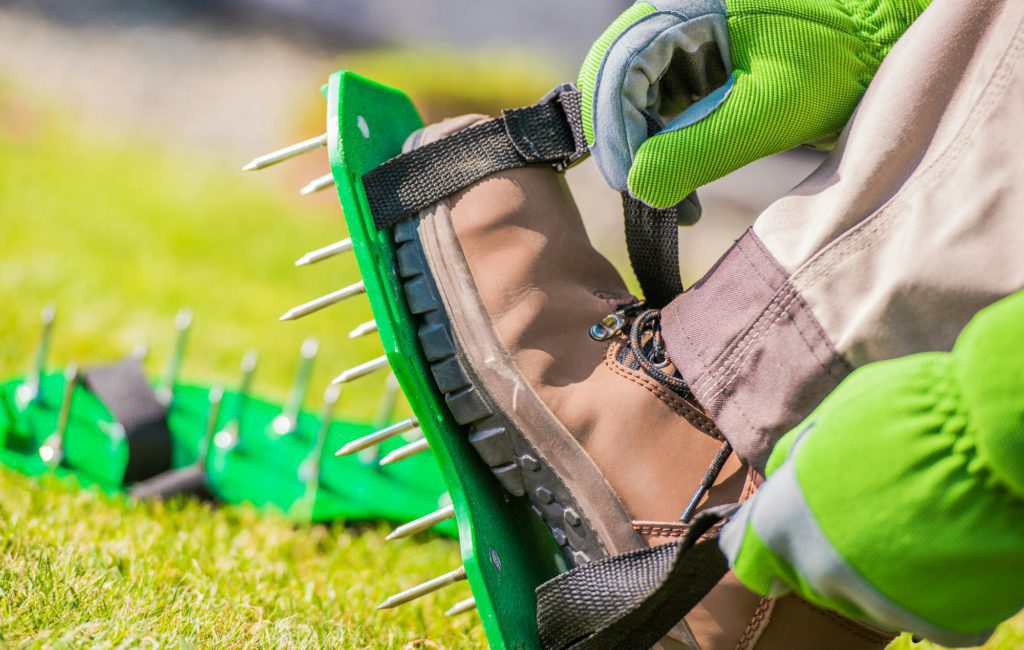
Post-Aeration Care
After aeration, taking the right follow-up steps is essential to maximize the benefits of the process and promote a healthier lawn. Begin by watering the lawn thoroughly to help the soil recover and encourage deep root growth. This is especially important if you plan to overseed, as new seeds need consistent moisture to germinate and establish. Applying a high-quality fertilizer after aeration provides essential nutrients that the grass needs to grow stronger and greener.
If overseeding, spread grass seed evenly across the lawn to fill in any bare or thin spots, improving the lawn’s density and appearance. Continue to water regularly in the weeks following aeration to support both existing grass and new seedlings. Additionally, avoid heavy foot traffic on the lawn during this recovery period to allow the grass to heal and establish robust roots.
Common Aeration Mistakes to Avoid
To ensure the best possible results from aeration, it’s important to avoid several common pitfalls and mistakes. One major mistake is aerating at the wrong time of year; doing so when grass is dormant or stressed can hinder recovery and growth. Always aerate during the peak growing season for your grass type—early spring or fall for cool-season grasses and late spring to early summer for warm-season grasses. Another common error is insufficient soil moisture. Aerating dry soil can be ineffective and can even damage the lawn, so make sure to water your lawn a day or two before aeration. Overlooking the importance of proper marking can also lead to damage to sprinkler heads and other underground utilities, so take time to mark these areas clearly. Additionally, using the wrong type of aerator or insufficiently covering the lawn can result in poor aeration. Core aerators are generally more effective than spike aerators, and it’s essential to ensure comprehensive coverage of the entire lawn.

The Most Drought Tolerant Grass for Full Sun Lawns
When summer hits hard and rain is nowhere to be found, even the greenest lawns can turn to hay. Homeowners walk outside, shake their heads, and wonder how the neighbor’s
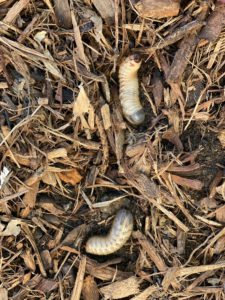
How to Best Treat Grub Infestations
A homeowners walks across the yard in late summer, noticing new patches of thinning, brown grass and noting the summer heat at the cause. What they don’t realize is that
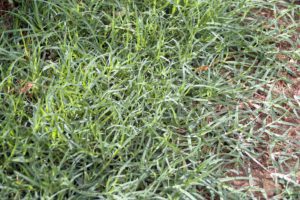
What Kind of Grass Grows in Florida?
It’s a late July afternoon, and you’ve just stepped barefoot onto your front lawn. The heat hits your skin, but your biggest concern is the patchy brown spots creeping across

How Long After Weed and Feed Can I Water?
It’s early Saturday morning. You’ve just spread weed and feed across the lawn, the kids are still asleep, and you’re wondering whether you should go ahead and set the sprinklers.

Bermuda Grass in Winter
You wake up one crisp December morning, glance out the window, and your once-green lawn has turned a dull tan. No patches, no dead spots, just uniformly brown. It looks

What Happens to Weeds in the Winter?
You rake the last pile of leaves, step back to admire your now-bare lawn, and then spot a scraggly patch of green thumbing its nose at the frost. It’s mid-December,


